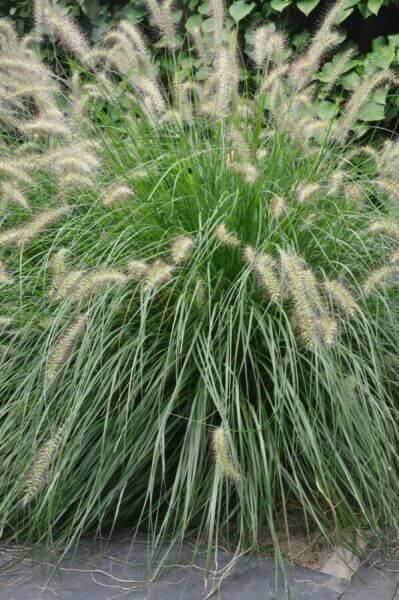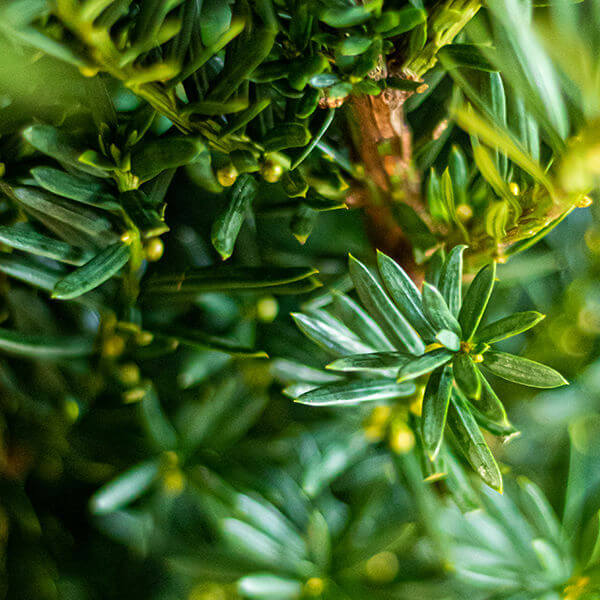Best Hedging Plants For Informal Borders
Best Hedging Plants For Informal Borders
Blog Article
Best Hedging Plants For Softening Walls
Enhance your garden's appeal with lush hedge ranges such as Yew (Taxus), Thuja, Laurel, Photinia, and Bamboo, celebrated for their structural stability and environmental benefits.
Yew and Thuja supply evergreen coverage and winter season strength, while Laurel offers fast development and broad, fragrant leaves.
Photinia includes seasonal beauty with its vibrant red foliage, and Bamboo provides a low-maintenance, tranquil ambiance.
These hedges improve air quality, lower noise, and create tranquil, personal areas.
Proper planting, spacing, and maintenance make sure energetic growth and environmental consistency.
Check out how these lavish ranges can raise your garden's appeal and well-being.
Key Takeaways
Change Your Garden With Lush Hedge Ranges
- Select Yew for its thick, evergreen growth and unrivaled durability.
- Select Laurel for its quick development and broad leaves, ensuring quick privacy.
- Select Photinia for its dynamic seasonal foliage, which turns a striking dark red.
- Make use of Bamboo for a low-maintenance, winter-hardy hedge with visual appeal.
- Area plants 2-3 per meter and prune frequently for ideal growth and health.
Popular Hedge Plants
When changing a garden with lavish hedge ranges, it's important to consider popular hedge plants such as Yew, Thuja, Laurel, and Photinia due to their unique characteristics and benefits.
Yew (Taxus) is highly esteemed for its longevity and dense, green development, making it a prime option for withstanding landscapes.
Thuja is noted for its evergreen foliage and robust winter durability.
Photinia adds seasonal vibrancy with red leaves that darken in time, creating dynamic visual appeal.
Laurel offers quick growth and fragrant, broad leaves, ideal for fast personal privacy.
Furthermore, Bamboo is an outstanding option for atmosphere, using a low-maintenance, winter-hardy alternative that improves the garden's aesthetic with its stylish, swaying canes.
These selections deal with a range of horticultural requirements and preferences.
Benefits of Garden Hedges
Garden hedges use a plethora of advantages, making them a valuable addition to any landscape. These natural barriers are cost-effective to carry out and offer significant wind defense, boosting air flow and adding to sound reduction. The thick foliage of hedges like Thuja and Beech guarantees personal privacy by blocking visibility, developing a remote and serene environment.
Hedges also play a vital function in microclimate regulation, supplying a stable environment that cultivates plant growth and decreases temperature variations. Their complex leaf structures filter pollutants, improving air quality and contributing to a much healthier garden ecosystem.
Furthermore, hedges master sound decrease, absorbing and deflecting acoustic waves to lower ambient noise levels. This dual performance of providing both acoustic and visual privacy boosts the total serenity and visual appeal of any garden.
Planting and Maintenance Tips
For an effective hedge, meticulous preparation of the planting location is crucial. Guarantee the soil has correct pH and drainage to support strong root advancement.
Area the plants appropriately for the selected types. Water the hedge often throughout its initial growth phase, changing as needed with seasonal modifications.
Implement a systematic insect control and illness prevention strategy, using natural or chemical treatments when necessary. Routinely examine for aphids, termites, and fungal infections.
Apply mulch to maintain wetness and reduce weeds. Seasonal pruning promotes thick development and air circulation, important for plant health.
Following these guidelines will help you cultivate a dynamic, properly maintained hedge that enhances the beauty of your garden.
Spacing and Trimming Guidelines
Spacing and Cutting Standards
Correct spacing and cutting are crucial for cultivating healthy, visually appealing hedges. Adequate spacing ensures each plant receives sufficient nutrients, light, and air flow.
Follow these standards for optimum hedge maintenance:
- Spacing: Position hedge plants 2-3 plants per meter to encourage robust growth.
- Pruning Techniques: Routine pruning is necessary for keeping wanted hedge height and shape. Cut brand-new development in summertime and cut back older wood during winter season.
- Seasonal Care: Adjust cutting schedules and techniques according to seasonal requirements to ensure plant health.
- Hedge Height: Routinely monitor and trim to preserve the desired hedge height and attain consistent visual appeals.
Adhering to these actions will ensure your hedge prospers, enhancing both the appeal and performance of your garden.
Picking the Right Hedge
Selecting the Right Hedge
Selecting the suitable hedge involves assessing aspects such as mature height, foliage density, and ecological strength. Successful hedge plant selection needs comprehending each types' more info growth attributes and site-specific flexibility.
For instance, Yew (Taxus) offers exceptional longevity and dense development, while Thuja is significant for its winter season resilience. Furthermore, thinking about upkeep requirements is crucial; fast-growing species like Laurel or Privet demand routine cutting, whereas low-maintenance alternatives like Bamboo or Ivy might be more effective for those looking for minimal maintenance.
Environmental aspects such as soil type, light schedule, and moisture conditions must also assist the selection procedure. This mindful approach guarantees the selected hedges will prosper, supplying both visual and practical advantages to the garden landscape.
Delivery and Planting Guidance
To ensure your hedge plants prosper, they must be provided by specialized carriers and planted without delay upon arrival.
Follow these essential steps for successful planting:
- Soil Preparation: Enrich the soil with natural matter to enhance drain and nutrient material.
- Planting Depth: Produce a trench two times the width and equivalent to the depth of the root ball.
- Watering Methods: Water completely after planting, keeping the soil regularly damp but not saturated.
- Mulching: Apply a layer of mulch to retain wetness and reduce weeds.
Customer Assistance and Service
Offered the important function of timely assistance in horticultural pursuits, our consumer assistance team is available six days a week through telephone, e-mail, and social networks to provide expert advice and quickly deal with any concerns. Their dedication to quick response times guarantees customer complete satisfaction by dealing with questions associated with plant health, optimal planting techniques, and maintenance schedules.

-------------------
Email
This comprehensive assistance system, strengthened by a stellar 9.3/ 10 consumer score, highlights our commitment to boosting the gardening experience for each client.
Regularly Asked Questions
How Long Does It Consider Hedge Plants to Establish?
Hedge plants typically require one to 3 years to become totally established, with the exact period varying by types and growing conditions.
Effective care throughout this critical duration is essential for robust growth. Constant watering, vigilant weed control, and suitable fertilizer application are pivotal in promoting strong root development.
For instance, fast-growing species like Laurel might develop quicker, while slower-growing ranges such as Yew might take longer. Persistent upkeep accelerates the establishment procedure, leading to healthy and thick hedges.
What Are the very best Hedge Plants for Privacy?
The concern of the very best hedge plants for privacy involves assessing evergreen and deciduous alternatives.
Evergreen hedges like Thuja, Laurel, and Cypress provide year-round protection, making sure continuous privacy.
In contrast, deciduous hedges such as Beech provide seasonal personal privacy, shedding leaves in cooler months.
Key maintenance suggestions for privacy hedges consist of regular trimming, fertilizing in spring, and appropriate spacing-- usually 2 to 3 plants per meter.
In addition, constant watering and thorough weed elimination are vital for promoting healthy, thick development.
Can Hedge Plants Bring In Wildlife to My Garden?
Yes, hedge plants can bring in wildlife to your garden by supplying necessary advantages like shelter, food, and nesting websites, consequently boosting regional biodiversity. For circumstances, yew, holly, and laurel are outstanding for bring in birds, while ivy supports a range of pests.
Nevertheless, it's important to keep in mind that there are some downsides, such as increased upkeep to manage pests and routine maintenance. Carefully selecting and keeping hedge ranges can help stabilize these advantages and disadvantages, ultimately fostering a sustainable and lively community in your garden.
Are There Any Blooming Hedge Plants Available?
Yes, there are flowering hedge plants available that can boost the charm of your garden.
For example, Elaeagnus, likewise called Olive Willow, produces aromatic white flowers in the fall, adding a touch of sophistication.
Photinia, another popular option, showcases vibrant red leaves that mature into an abundant green, creating a vibrant visual effect throughout the seasons.
To make sure these plants flourish, it's vital to practice appropriate pruning strategies and seasonal maintenance, such as cutting new growth in the summer season and cutting back in the winter season.
These measures will help maintain the health and visual appeal of your blooming hedges.
How Do I Prevent Insects in My Hedge Plants?
To avoid pests in hedge plants, utilize natural bug control methods and preserve correct hedge care. Introduce advantageous pests like ladybugs, which prey on harmful insects, to develop a balanced community.
Frequently inspect your hedges for signs of invasion and immediately eliminate any affected parts to avoid the spread. Guarantee the health of your hedges by using well balanced fertilizers and providing adequate water.
Make use of mulching to retain soil moisture and proper spacing to decrease plant stress and promote robust development. These practices collectively assist in decreasing bug concerns and keeping a healthy hedge.
Conclusion
In essence, picking the ideal hedge ranges such as Yew, Thuja, and Laurel can change any garden into a relaxing haven. These plants offer year-round greenery, enhance aesthetic appeal, and offer useful advantages like sound reduction and wind security.
Proper planting techniques, precise spacing, constant watering, and seasonal trimming are important for optimal development.
Reliable delivery services and skilled consumer assistance ensure a smooth experience from purchase to planting, making it easier than ever to elevate your outdoor space.
Garden hedges offer a wide range of benefits, making them an important addition to any landscape. These natural barriers are economical to execute and provide substantial wind security, enhancing air blood circulation and contributing to noise decrease. The dense foliage of hedges like Thuja and Beech ensures personal privacy by obstructing presence, producing a serene and secluded environment.

Pruning Techniques: Routine pruning is essential for keeping wanted hedge height and shape. Cut brand-new growth in summer and cut back older wood during winter season.
Report this page